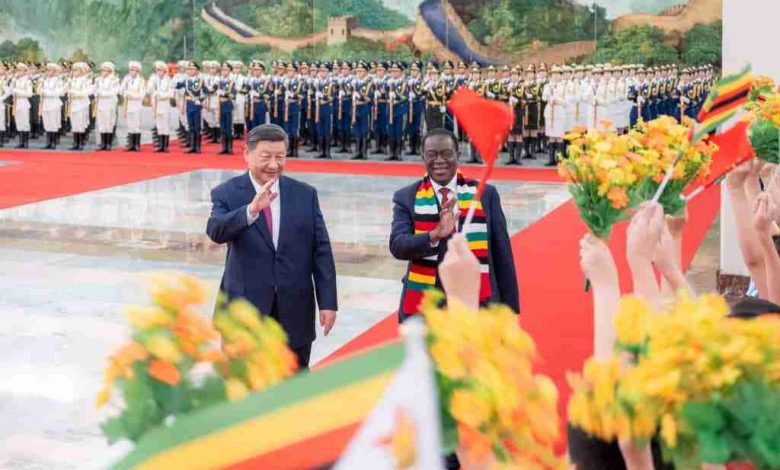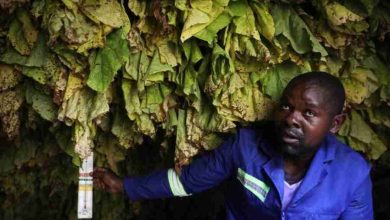FACT BOX | By the numbers: Taking stock of Zimbabwe’s Chinese loans, trade and investment

President Emmerson Mnangagwa is in China for the Forum on China Africa Cooperation. Earlier, he traveled to the commercial hub of Shenzhen, touring companies such as Huawei and BYD, both of which have interests in Zimbabwe. In Beijing, he has met President Xi Jinping at the start of the FOCAC event.
The meeting happens as China has slowed down on much of its spending in Africa, placing pressure on leaders to put more bankable projects on the table for the “all weather friend” to consider.
Just how much do we trade with China? How much do we owe them? What are some of the major Chinese projects in Zimbabwe, and which big Chinese firms are in the country? Here, newZWire gives a fact sheet on Zimbabwe and China’s economic relationship.
How much trade?
In 2023, China-Zimbabwe trade was US$3.12 billion. Zimbabwe exported goods worth US$1.71 billion and imported US$1.41 billion worth of goods from China, according to data from the Chinese embassy in Harare.
Zimbabwe exports mostly minerals and tobacco, and critics want the government to push for more diversified trade. On Tuesday, Zimbabwe and China signed a “phytosanitary protocol” with China for avocado exports. This is a set of quality regulations that allows access for Zimbabwean avocados into the vast market.
Zimbabwe’s trade with China is smaller than that of many regional peers. Zambia trades goods worth over US$5 billion with China, exporting mostly copper.
What do we owe China?
Zimbabwe owes China US$2 billion, according to Ministry of Finance figures. The bulk of China’s loans to Zimbabwe are in energy, used for the expansion of Kariba and Hwange power stations.
Zimbabwe’s biggest debt is to Western creditors, the Paris Club, which is owed US$4 billion. Outside of the Paris Club, China is the biggest creditor, making up 95% of the total Non-Paris Club external debt.
Where do we rank on Chinese loans in Africa? Zimbabwe accounts for 1.7% of the value of China’s loans to Africa between 2000 and 2023, according to a report by Boston Universty’s Global Development Policy Center. Between 2000 and 2023, China gave 1,306 loans worth US$182.3 billion to Africa, with Zimbabwe getting 28 loans worth US$3 billion over the period. Angola, which owes China US$46 billion, has the biggest share of Chinese loans in Africa, at 25%.

Chinese investment
China is the largest foreign investor in Zimbabwe. In 2023, the Zimbabwe Investment Development Agency (ZIDA) issued 369 new licences to Chinese investors. The expected value of their projects was US$3.9 billion. Of these projects, 201 are in mining and 79 are in manufacturing. In comparison, South Africa, the second largest investor source, had just 56 new investor licenses, with planned projects worth US$1.7 billion.
Despite this growth in Chinese interest, Zimbabwe in 2022 accounted for only 3-5% of China’s total investment in Africa, according to an analysis of Africa’s by Lauren Johnston, associate professor of China studies at the University of Sydney.
Chinese public infrastructure projects in Zimbabwe
Compared to African peers, Zimbabwe has struggled to secure large-scale infrastructure funding from China due to its poor credit record. Debts to the Chinese credit guarantee agency has kept many Chinese funders at bay.
In 2013, Zimbabwe signed a 20-year loan deal with China’s Eximbank to expand the Kariba power plant. China’s Sinohydro got the contract to add two units at Kariba, with a total of 300MW. These were commissioned in March 2018. Sinohydro also built the two new Units 7-8 at Hwange, delivering 600MW, for almost US$1 billion. Zimbabwe’s hopes to secure more funding for thermal power were dashed when China stopped funding foreign coal projects in 2022.
In 2018, parliament ratified a US$153 million Chinese loan for the expansion of the RGM International Airport. In 2016, Zimbabwe got a US$164 million loan to expand Victoria Falls Airport. China’s Jiangsu was the contractor for both projects. China International Water and Electric Water has been involved in the construction of the Gwayi-Shangani dam, a project delayed by government funding.
In 2015, TelOne got a $99 million loan to expand its fibre optic network. China also extended loans to fund three network expansion phases at mobile operator NetOne.
Which are the biggest Chinese firms in Zim?
Combined, Chinese companies have spent over US$1 billion on acquiring lithium mines and building processing plants since 2022. Huayou Cobalt, which bought Arcadia Mine from Australia-listed Prospect Resources for US$422 million in 2022 and spent US$300 million on processing plants. Sinomine bought Bikita Minerals from European investors for US$180 million, budgeting US$200 million for processing. Chengxin bought 50% of Max Mind, which runs Sabi Star Mine in Buhera.
Zimbabwe is pushing the lithium companies to invest in a “battery park” in Mutorashanga, an area designated as a special economic zone to add value to lithium. BYD, one of the world’s biggest electric vehicle firms, has a small but growing dealership in Zimbabwe. The company is a shareholder in Chengxin, the lithium miner. Chinese firm CanMax, is a funder and shareholder of UK’s Premier Africa Mining, which runs Zulu Lithium.
Tsingshan, the world’s biggest stainless steel company, recently completed the first phase of its Manhize steel plant. The company also runs Gwanda Lithium.
Looking for more
Zimbabwe is hoping to use FOCAC to attract more Chinese investors. He met executives of Xin Gang Lian, which is building a ferrochrome mine and thermal plant near Beitbridge and is assessing plans to build a steel plant. Zimbabwe is also seeking investment from China Energy Engineering Corporation, which has proposed a 1000MW floating solar plant on Kariba dam. Other engagements include China Rail, construction company Poly Technologies, defence contractor NORINCO, power storage company NARI, Huawei plus lithium tech company BYD. – Newzwire




